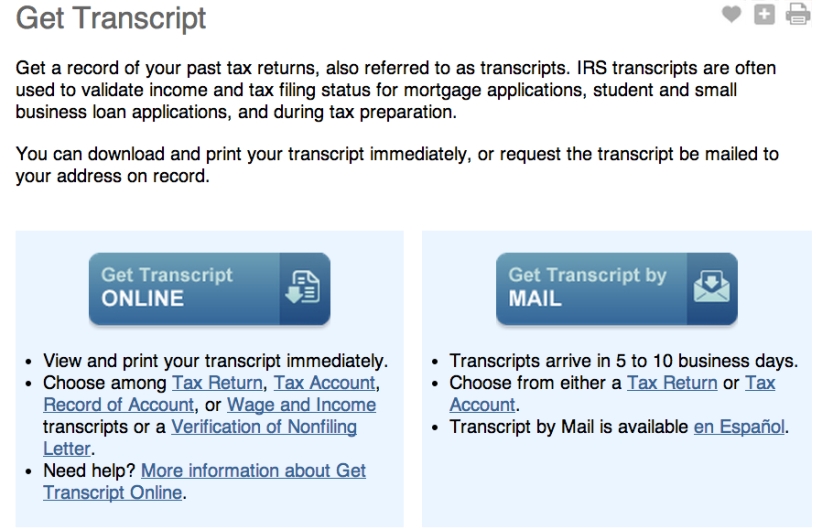“I am very excited to announce that the IRS has just launched, this week, a transcript application which will give taxpayers the ability to view, print, and download tax transcripts,” said Katherine Sydor, a policy advisor in the Office of Consumer Policy of the Treasury, “making it easier for student borrowers to access tax records he or she might need to submit loan applications or grant applications.” [VIDEO]
Previously, filers could request a copy of a return — the “transcript” but would have to wait 5-10 business days to receive it in the mail. For people who needed more rapid access for applications, the delay could be critical. A White House fact sheet subsequently confirmed the news, under the rubric of “streamlining application paperwork,” and a quick follow up with an official secured the correct URL for the new IRS Web application to get a tax transcript.

I created an account, which involved jumping through the standard hoops of pass phrase, pass image and security questions familiar from bank accounts, and answered a number of questions that made it pretty clear that the IRS knew exactly who I was and where I had lived.
When I tried to actually download the transcript, though, I ran into some issues: first, a browser error in Chrome – ”This XML file does not appear to have any style information associated with it. The document tree is shown below.” Using Firefox, however, I was able to at least get the page where I could choose from various years of transcripts.

Unfortunately, clicking any of the links delivered a file that my Macbook was unable to parse. I was, however, able to log into IRS.gov and easily download last year’s tax return with one click to my iPhone. Success!
While the technical problems I ran into suggest that Apple computer users might run into some issues, I have a funny feeling that (the vast majority) of people who are running Internet Explorer on a Windows machine will fare better.
The fact that American citizens could not access their own tax returns online in 2014 might seem jarring but, until this week, that was the status quo. This advance represents the sort of somewhat mundane but important shift that the Obama administration’s approach to digital government have enabled over the past five years.
While the troubles behind the botched launch of Healthcare.gov have shaken the confidence of many citizens in the capacity of this administration to deliver effective digital services and months of headlines about digital surveillance by the National Security Agency have diminished trust in government overall, the ability of the “tech surge” to fix the site and the success of the technology team at the Consumer Financial Protection Bureau not only offers a guide for how to avoid similar issues but highlights a less salacious and boring reality that will generate no headlines nor heated rhetoric on cable news shows: most public officials and civil servants are quietly working to deliver better customer service for citizens.
Being able to download a tax return online is not, however, without risks. The Internal Revenue Service will need to continue to be vigilant about security. The new functionality will almost certainly inspire fraudsters to create mockups of the government website that look similar and then send phishing emails to consumers, urging them to “log in” to fake websites.
Perhaps most problematically, people will download tax returns to mobile devices and laptops and then not take steps to protect them with encryption. If you do download your returns or personal health information, make sure to also install full disk encryption on every machine you own. Leaving your files unprotected there is like leaving the door to your house unlocked with your tax returns and medical records on the kitchen table.
0 comments:
Post a Comment